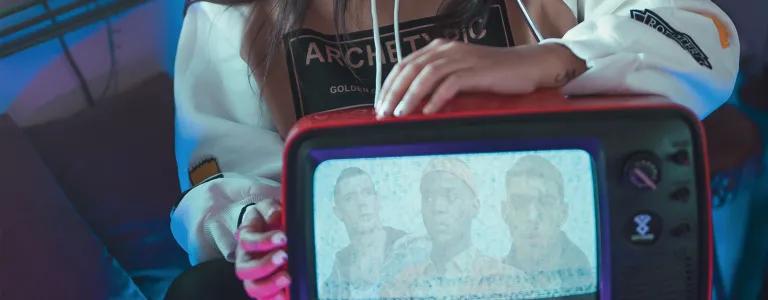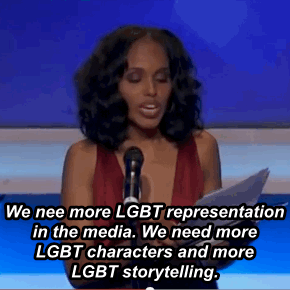
Are LGBTQ+ People Represented Enough In The Media?
LGBTQ+ representation on screen is higher than it’s ever been. But are these growing figures alone enough in the fight for equality? Ellen Jones, LGBTQ+ campaigner, tells us why our work’s not done yet.
If you look at the media we consume, whether on screen, on stage or elsewhere, you might think that LGBTQ+ people are rare in society, or that we all look alike. This is simply not the case.
Seeing LGBTQ+ characters also is not enough if the only representation we have of them falls into tropes and stereotypes that are unhelpful. LGBTQ+ narratives are also often incredibly depressing and tragic with many LGBTQ+ characters being killed off – there is a common trope popularly known as ‘bury your gays’. Inherently, it is not that LGBTQ+ characters die that’s problematic, but when they are subject to tragedy in shows where their cisgender, straight counterparts do not, it lends itself to the idea that LGBTQ+ characters are more expendable.

Even shows that go some way to creating well-rounded and diverse LGBTQ+ narratives – say Netflix’s Sex Education – can perpetuate unhelpful narratives like the idea homophobic bullies are secretly closeted and that their victims should fall in love with them. Again, this is not to say this does not happen, but when it is the only representation you see (because there are so few examples of LGBTQ+ media), it is easy to understand why so many fear coming out, entering relationships and existing as LGBTQ+ people.
Of course, it is not simply that we need to encourage more LGBTQ+ narratives in media – we need to ensure that they are being written, directed, produced and acted by LGBTQ+ folks. We have seen repeatedly how trans characters are played by cisgender actors – perpetuating the harmful belief that trans people are playing dress up.
This isn’t a case of simply encouraging more LGBTQ+ people into the arts, however, (in fact, I can hardly think of an area more populated by LGBTQ+ folks), but in ensuring the opportunities exist for them in the first place and that the work environment is a safe space where people can be their authentic self. The representation we see on screen is the product of the culture it is made in – and so representation is as much an issue of workplace inclusion and opportunity.

There is also often a dilution of identities that creatives like myself have seen when it comes to our work. When I talk about being queer, I am sometimes asked not to talk about being autistic although that is an incredibly important part of my identity and how I navigate the world. Shiva Raichandani, creator of Queer Parivaar, feels similarly: “As an Indian non-binary person, I certainly don’t see myself represented enough.”.
When there is representation of LGBTQ+ people, it is generally white, cisgender, able-bodied because these are socially viewed as the norm. This has a real-life impact on LGBTQ+ folks who hold other identities because it is assumed that they cannot be LGBTQ+ when in reality, there is no one way to be. Something I have often said is that “you get all of me, or none of me” and that I refuse to compartmentalise myself. Shiva expresses similarly, saying “Media tends to filter and dilute multidimensional identities into something palatable for consumption. You can’t pick and choose which parts of my identity deserve attention.”
As consumers of media, we have the opportunity to improve things by supporting LGBTQ+ representation we like and calling out things that are problematic. If a show with an LGBTQ+ storyline flops, there is an assumption by commissioners that LGBTQ+ narratives are not what people want to see and are not worth funding. Thus, it is imperative we seek out and support the representation we want to see and communicate when things are less than great. Sharing your support online is a really good way to encourage the people who organise budgets to commission similar productions.
LGBTQ+ representation might be more common now, but we are nowhere near done. Clumsy and unhelpful portrayals of LGBTQ+ life still make their way onto our screens and stage. Supporting LGBTQ+ creators is imperative in ensuring that representation improves and, as Shiva notes, “visibility is important, but it isn’t enough.”


